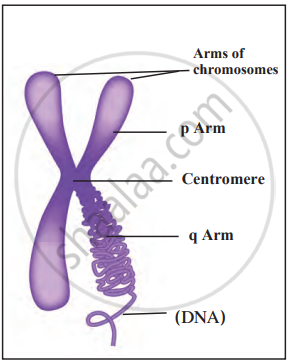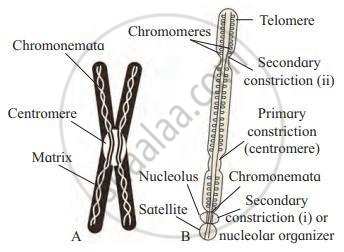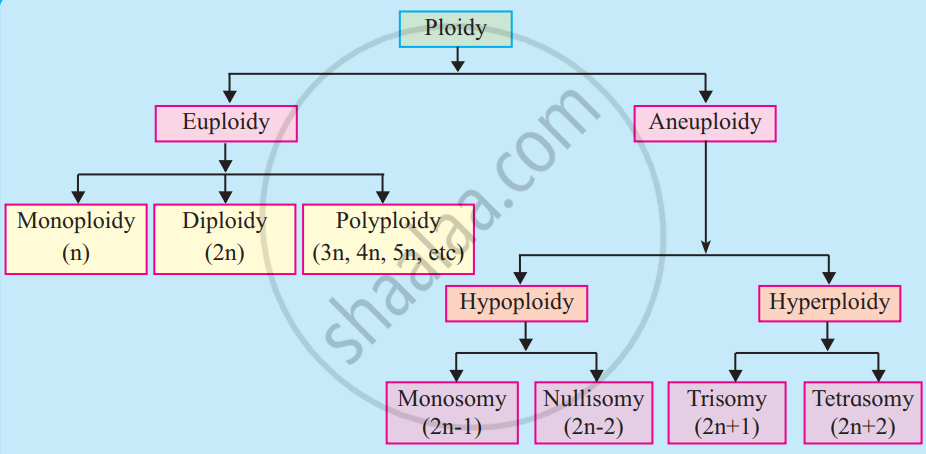Topics
Reproduction in Lower and Higher Plants
- Reproduction
- Mode of Reproduction in Plant
- Asexual Reproduction in Plant
- Vegetative Reproduction
- Natural Vegetative Reproduction
- Artificial Vegetative Reproduction
- Sexual Reproduction in Flowering Plants
- Pre-fertilization in Plant: Structure and Events
- Pre-fertilization in Plant: Stamen (Male Reproductive Unit)
- Pre-fertilization in Plant: Microsporangium
- Structure of Microspore Or Pollen Grain
- Pre-fertilization in Plant: Pistil (Female Reproductive Unit)
- Pre-fertilization in Plant: Megasporangium
- Pre-fertilization in Plant: Formation of Embryo Sac
- Pollination
- Self Pollination (Autogamy)
- Cross Pollination
- Agents of Pollination
- Outbreeding Devices
- Pollen Pistil Interaction
- Fertilization Process
- Post Fertilisation in Plant: Structures and Events
- Development of Endosperm
- Post Fertilization in Plant: Development of Embryo (Embryogeny)
- Formation of Seed and Fruit
- Apomixis
- Parthenocarpy
- Polyembryony
- Kinds of Pollination
Reproduction in Lower and Higher Animals
- Reproduction
- Mode of Reproduction in Animal
- Asexual Reproduction in Animal
- Sexual Reproduction in Animals
- Human Reproduction
- The Male Reproductive System
- The Female Reproductive System
- Menstrual Cycle (Ovarian Cycle)
- Gametogenesis
- Fertilization in Human
- Embryonic Development in Human
- Implantation in Human
- Pregnancy in Humans
- Placenta (Growth) in Human
- Parturition (Birth) in Human
- Lactation in Human
- Reproductive Health
- Population Stabilisation and Birth Control
- Medical Termination of Pregnancy (MTP)
- Sexually Transmitted Diseases (STD)
- Infertility
- Gastrulation in humans
Inheritance and Variation
- Heredity or Inheritance
- Gregor Johann Mendel – Father of Genetics
- Genes and Genetic
- Mendelian Inheritance - Mendel’s Law of Heredity
- Back Cross and Test Cross
- Deviations from Mendel’s Findings
- Chromosomal Theory of Inheritance
- Chromosomes - The Carriers of Heredity
- Linkage and Crossing Over
- Autosomal Inheritance
- Sex Linked Inheritance
- Sex Determination
- Genetic Disorders
Molecular Basis of Inheritance
- Deoxyribonucleic Acid (DNA) and Its Structure
- The Genetic Material is a DNA
- Packaging of DNA Helix
- DNA Replication
- Protein Synthesis
- Regulation of Gene Expression
- Operon Concept
- Genomics
- Human Genome Project
- DNA Fingerprinting Technique
- Genetic Code
Origin and Evolution of Life
- Origin and Evolution of Universe and Earth
- Theories of Origin of Life
- Chemical Evolution of Life (Self-assembly Theory of the Origin of Life)
- Darwinism
- Mutation Theory
- Modern Synthetic Theory of Evolution
- Organic Evolution
- Hardy Weinberg’s Principle
- Adaptive Radiation
- Evidences for Biological Evolution
- Speciation
- Geological Time Scale
- Human Evolution
- Theories of Biological Evolution
Plant Water Relation
- Plant Water Relation
- Properties of Water
- Water absorbing organ
- Water Available to Roots for Absorption
- Means of Transport in Plants
- Concept of Imbibition
- Simple Diffusion
- Concept of Osmosis
- Osmotic Pressure
- Facilitated Diffusion
- Turgidity and Flaccidity (Plasmolysis)
- Active Transport
- Passive Transport
- Water Potential (ψ)
- Path of Water Across the Root
- Translocation of Water (Ascent of Sap)
- Transport of Mineral Ions
- Transport of Food
- Transpiration
- Types of Transpiration
- Structure of Stomatal Apparatus
- Significance of Transpiration
Plant Growth and Mineral Nutrition
- Plant Growth
- Phases of Plant Growth
- Conditions Necessary for Plant Growth
- Plant Growth Rate
- Plant Growth Curve
- Differentiation, De-differentiation, Re- Differentiation
- Plant Development
- Plant Plasticity
- Plant Hormones
- Types of Plant Hormones: Auxins
- Types of Plant Hormones: Gibberellins
- Types of Plant Hormones: Cytokinins
- Types of Plant Hormones: Ethylene
- Types of Plant Hormones: Abscisic Acid (ABA)
- Photoperiodism
- Vernalization (Yarovization)
- Plant Mineral Nutrition
- Nitrogen Cycle
Respiration and Circulation
- Respiration
- Organs of Respiratory Exchange
- Human Respiratory System
- Mechanism of respiration-Breathing
- Regulation of Breathing / Respiration
- Modified Respiratory Movements
- Disorders of Respiratory System
- Transportation in Living Organisms
- Circulation in Animals
- Types of Closed Circulation
- Blood Circulatory System in Human
- Composition of Blood: Plasma (The Liquid Portion of Blood)
- Composition of Blood: Red Blood Cells (Erythrocytes)
- Composition of Blood: White Blood Cells (Leukocytes)
- Composition of Blood: Blood Platelets (Thrombocytes)
- Function of Platelets - Clotting of Blood (Coagulation)
- Human Heart
- Working mechanism of human heart
- Blood Vessels
- Blood Pressure (B.P.)
- Electrocardiogram (ECG)
- Lymph and Lymphatic System
- Mechanism of respiration - Internal respiration
- Mechanism of respiration - External respiration
- Mechanism of respiration - Cellular respiration
Control and Co-ordination
- Control and Co-ordination
- Nervous System in Hydra
- Nervous System in Planaria (Flatworm)
- Neural Tissue
- Neuron (Or Nerve Cell) and Its Types
- Neuroglial Cells (Or Glial Cells)
- Human Nervous System
- Central Nervous System (CNS)
- The Human Brain - Forebrain
- The Spinal Cord
- Peripheral Nervous System (PNS)
- Sensory Receptors
- Human Eye
- Human Ear
- Disorders of Nervous System
- Chemical Coordination
- Human Endocrine System
- The Hypothalamus
- Pituitary Gland or Hypophysis Gland
- The Pineal Gland
- Thyroid Gland
- Parathyroid Gland
- Thymus Gland
- Adrenal Gland (Suprarenal Gland)
- Pancreas (Islets of Langerhans)
- Reproductive Glands (Gonads)
- Synapse - Properties of nerve fibres
- Synapse - Types of synapse
- Transmission of nerve impulse
- Generation of nerve impulse
- Reflex Action
- Autonomic Nervous System (ANS)
- Diffuse Endocrine Glands
Human Health and Diseases
- Defence System in Our Body: Immune System
- Immunity
- Types of Immunity
- Vaccination and Immunization
- Structure of Antibody
- Disease
- Protozoan Diseases
- Helminthic Diseases
- Bacterial Diseases
- Viral Diseases
- Fungal Diseases
- Vector Borne Diseases
- Cancer
- Adolescence
- Addiction
- Drug Abuse
Enhancement of Food Production
- Improvement in Food Production
- Plant Breeding
- Tissue Culture
- Single Cell Protein (SCP)
- Biofortification
- Animal Husbandry (Livestock)
- Animal Breeding
- Dairy Farming
- Poultry Farming
- Apiculture (Bee Farming)
- Pisciculture (Fish Farming)
- Sericulture
- Lac Culture
- Microbes in Human Welfare
- Microbes in Industrial Production
- Microbes in Sewage Treatment
- Microbes in Energy Generation
- Microbes as Biocontrol Agents
- Microbes as Biofertilizers
Biotechnology
- Biotechnology
- Process and Principles of Biotechnology
- Methodology for rDNA Technology
- Commercial Applications of Biotechnology
- Bioethics
- Effects of Biotechnology on the Environment
- Biopatent and Biopiracy
- Transgenic Plants
- Transgenic animals
- Effects of Biotechnology on Human Health
- Tools and techniques for gene cloning/ rDNA technology
Organisms and Populations
- Organisms and the Environment Around
- Habitat
- Niche
- Structure and function of an Ecosystem
- Adaptations and Its Types
- Population
- Population Interactions
- Organisms and Populations
Ecosystems and Energy Flow
- Ecosystem
- Structure and function of an Ecosystem
- Concept of Energy Flow in an Ecosystem
- Classification of Animal
- Trophic Level
- Food Chain
- Food Web
- Ecological Pyramids
- Nutrient Cycles
- Ecological Succession
- Ecosystem Services
- Productivity
- Decomposition
- Phosphorus Cycle
- Carbon Cycle
Biodiversity, Conservation and Environmental Issues
- Biodiversity
- Levels of Biodiversity
- Patterns of Biodiversity
- Biodiversity Current Scenario
- Loss of Biodiversity
- Conservation of Wildlife
- Biological Diversity Act, 2002
- Environmental Issues
- Air Pollution and Its Causes
- Noise Pollution
- Water Pollution and Its Causes
- Green House Effect
- Preventive Measures of Green House Effect
- Global Warming
- Preventive Measures of Global Warming
- Ozone Layer Depletion
- Deforestation and Its Causes
- Mission Harit Maharashtra
- Conservation of Biodiversity
Excretion and Osmoregulation
- Modes of Excretion: Ammonotelism, Ureotelism, and Uricotelism
- Human Excretory System
- Function of the Kidney - “Production of Urine”
- Regulation of Kidney Function
- Common Disorders of the Urinary System
Human Reproduction
- Discovery of Chromosomes
- Chromosomes
- Variation in Chromosome Number (ploidy)
- Structure of a Chromosome
Discovery of Chromosomes:
Gregor Johann Mendel published his work on inheritance of traits in 1866, but for some reason, it remained unnoticed or unrecognised till 1900. In 1900, three scientists, Hugo de Vries, Correns and von Tschermak, independently rediscovered Mendel’s work on the inheritance of traits. Walter Sutton, along with Theodor Boveri (1903), studied the parallel behaviour of Mendel’s factors (genes) and the behaviour of chromosomes at the time of meiosis. Based on these observations, the chromosomal theory of inheritance was put forth by Sutton and Boveri. This theory identifies chromosomes as the carriers of genetic material. This theory states that the chromosomes are present in pairs in somatic cells. The nucleus of gametes contains chromosomes, which carry all hereditary traits. Male and female gametes (sperm and egg) carry all the hereditary traits.
Chromosomes:
Chromosomes are filamentous bodies present in the eukaryotic nucleus. The term chromosomes (Gr., chromo = colour, soma = body) was coined by W. Waldeyer (1888). Chromosomes are visible during cell division. They are capable of self-replication and play a vital role in the heredity, mutation, variation, and evolutionary development of eukaryotic species. Chemically, eukaryotic chromosomes are made up of DNA, histone and non-histone proteins.

Organization of chromosome
Human somatic cells have 46 chromosomes arranged into 23 pairs. These include 22 pairs of autosomes and one pair of sex chromosomes (XX for females and XY for males).
- Function of Chromosomes: Chromosomes mainly act as carriers of heredity.
- Number of Chromosomes: The number of chromosomes is specific and constant for a particular species; therefore, it is of great importance in the study of the phylogeny and taxonomy of the species.
The chromosome number of some organisms has been given in the following table:
| Sr. No. | Organism | No. of Chromosomes |
|---|---|---|
| 1 | Crab | 200 |
| 2 | Maize | 20 |
| 3 | Frog | 26 |
| 4 | Roundworm | 4 |
| 5 | Potato | 48 |
| 6 | Human | 46 |
Variation in chromosome number (ploidy)
The term ploidy refers to the degree of repetition of the primary basic number of chromosomes (i.e., ‘x’) in a cell.
Euploidy: When the chromosome number in a cell is the exact multiple of the primary basic number, then it is called euploidy
1. Monoploidy (with one set of chromosomes where x n)
2. Diploidy (2n-two sets of chromosomes)
3. Polyploidy:
- Triploidy (3n-three sets of chromosomes)
- Tetraploidy (4n-four sets of chromosomes)
Aneuploidy: When the chromosome number is not the exact multiple of the haploid set, it is described as aneuploidy.
1. Hypoploidy (Fewer numbers of chromosomes than the normal diploid number)
- Monosomy (Loss of one chromosome from the diploid set (2n-1))
- Nullisomy (Loss of both chromosomes of a homologous pair (2n-2))
2. Hyperploidy (More chromosomes than the normal diploid number)
- Trisomy (Extra chromosome added to the diploid set (2n+1))
- Tetrasomy (Two extra chromosomes added to the diploid set (2n+2))
Structure of a Chromosome:
- Chromatids: Each chromosome is made up of two identical halves known as sister chromatids, which are linked at the centromere.
- Centromere: There is a constricted region on each chromosome. It is called the ‘primary constriction’ or ‘centromere’. This divides the chromosome into two parts.
- Telomeres: Chromosome ends have protective coverings that prevent disintegration and fusion with other chromosomes.
- Chromatin: DNA is wrapped around histone proteins, resulting in a complex that condenses to form visible chromosomes during cell division.
- Kinetochore: During mitosis and meiosis, spindle fibres attach to the centromere, pulling chromatids apart.
- Arm: Each chromatid has two arms, that is, the short arm (p arm) and a long arm (q arm).
- Genes: Chromosomes include DNA segments that encode proteins and determine inherited characteristics.
- Euchromatin and heterochromatin: Euchromatin is lightly packed and transcriptionally active, whereas heterochromatin is densely packed but transcriptionally inactive.
- Secondary constriction: Besides primary constriction, some chromosomes have an additional one or two constrictions called secondary constriction. At secondary constriction I, the nucleolus becomes organised during interphase. A satellite body (SAT body) is attached at secondary constriction II in very few chromosomes.

A: Parts of chromosomes B: Showing secondary constrictions and details

